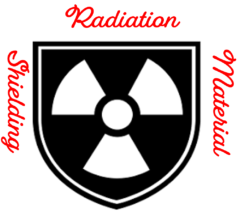In our previous post, 3 Different Types of Radiation Shielding Materials, we discussed various radiation shielding material options including standard lead (lead vinyl composition), lead composite and non-lead shielding materials. Radiation shielding garments are generally used to protect medical patients and workers from direct and secondary radiation during diagnostic imaging in hospitals, clinics and dental offices. Radiation shielding garments include x-ray aprons, vests, kilts, skirts and thyroid shields. Now that we have a better understanding of the radiation shielding options available we can apply this knowledge in choosing the right x-ray apron material for your application.
The Three Types Of Radiation Shielding Materials
The first and most well-known radiation shielding material is standard lead. Manufactured with 100% lead, standard lead x-ray aprons are the heaviest x-ray aprons available. The second radiation shielding material is a lead-based composite; lead composite x-ray aprons use a mixture of lead and other light weight radiation attenuating metals, reducing the weight by up to 25% compared to standard lead aprons. The third and final option is the non-lead or lead-free shielding material which is made from other types of attenuating metals including antimony, tungsten, bismuth and tin.
Core Material Options
The three core material options discussed all have their own unique benefits and features. There are many factors you will want to consider when making your decision on which x-ray apron material is best for you including the specific procedure being performed, length of the procedure, and the frequency of the procedure. Following the ALARA principles of time, distance and shielding your radiation safety officer or radiation physicist can evaluate the level of radiation protection required for your specific procedure.
Before we continue this discussion further, it is important to understand the terminology related to protective clothing and radiological protective materials. When choosing x-ray aprons, lead equivalency is quite possibly the most important factor to consider.
Attenuation
The definition of attenuation according to the American Society for Testing and Materials is “For radiological protective material, the reduction in the intensity of the X-ray beam resulting from the interactions between the X-ray beam and the protective material that occur when the X-ray beam passes through the protective material.”
Lead (Pb) Equivalency
The definition of lead equivalency according to the American Society for Testing and Materials is “For radiological protective material, the thickness of in millimeters of lead (commonly designated mmPb) of greater than 99.9 percent purity that provides the same attenuation as a given protective material.”
Kilovolts, Peak (kVp)
The definition of (kVp) according to the American Society for Testing and Materials is “the maximum electrical potential across an x-ray tube during an exposure, expressed in kilovolts.”
Which X-Ray Apron Material Is Right For You?

Standard lead X-ray aprons are manufactured using 100% lead are the most traditional and economical option. For example, the standard large lead plain back apron (Product Code: 790RL) offers frontal protection weighing in at 11 pounds. This particular apron offers a nominal lead equivalence of 0.5mm and 100% protection at 80 kVp. Standard lead x-ray aprons are well-suited for shorter procedures. The weight of the apron will increase depending on the level and areas of protection required.
Lead composite x-ray aprons are a lead-based alloy and can achieve weight reductions of up to 25% compared to standard lead x-ray aprons of the same size, style and lead equivalency. The lead composite large male Xenolite Elastic Tab Apron (Product Code: 610E) offers frontal protection weighing in at 9 pounds. This Xenolite apron offers a nominal lead equivalence of 0.50mm and 100% frontal protection at 100 kVp. This lead composite x-ray apron incorporates a two element material; the lead is blended with an additional attenuating metal and is recyclable. The lightweight and ultra-lightweight lead composite x-ray aprons are good for short to medium-length procedures.

Non-Lead or Lead-Free x-ray aprons are manufactured from a proprietary blend of attenuating heavy metals. Lead is not the only metal that protects you from an x-ray beam. These heavy metals may include barium, aluminum, tin, bismuth, tungsten and titanium. Non-lead aprons can be up to 40% lighter than standard lead aprons while still providing 0.50mm lead equivalency and 100% frontal protection at 100 kVp. The non-lead and lead-free aprons are recyclable and safe for non-hazardous disposal and are excellent for long procedures.
